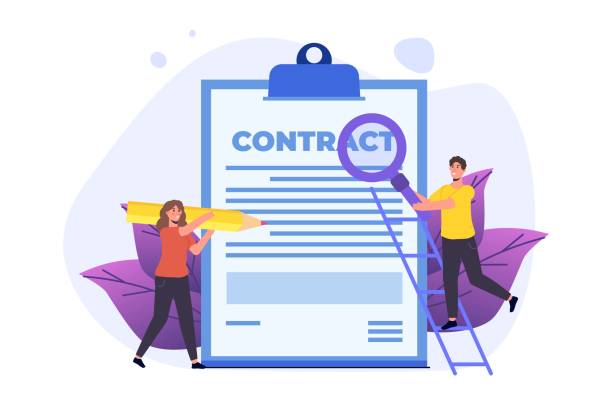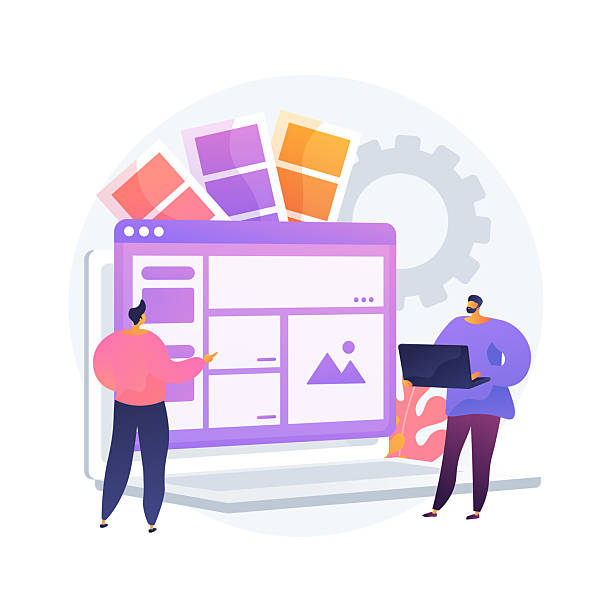Introduction to SEO-Optimized Website Design
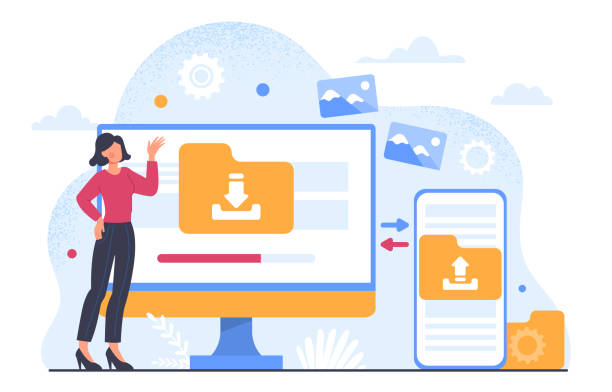
In today’s digital world, merely having a website is not enough.
To succeed in the competitive online space, your website must be designed not only to be appealing to users but also easily discoverable by search engines.
This is where the concept of #SEO_Optimized_Website_Design becomes crucial.
#SEO, or Search Engine Optimization, is a set of techniques and strategies aimed at increasing the visibility of a website in the #organic search results of engines like Google, Bing, and Yahoo.
An SEO-optimized website is created from the outset with search engine ranking factors in mind. This approach means intertwining technical, content, and user experience (UX) aspects.
This chapter serves as an explanatory and educational section, providing a foundation for a deeper understanding of SEO principles and its vital role in website design.
Without considering SEO from the design phase, your website may never reach its full potential in attracting organic traffic.
Did you know that most users only pay attention to the first page results on Google? This is a thought-provoking insight that doubles the importance of website optimization for search engines.
Are you frustrated with your online store’s low conversion rate?
Rasawb is your definitive solution with professional e-commerce website design!
✅ Increase your sales and revenue
✅ Unparalleled user experience for your customers
⚡ Get a free consultation now!
The Importance of Keyword Research in SEO
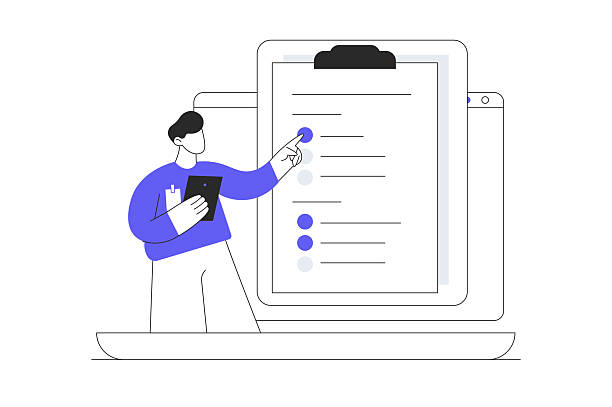
Keyword research is the cornerstone of any successful SEO strategy and the initial step in SEO-optimized website design.
This process involves finding the words and phrases your target users use to find products, services, or information in search engines.
Without a correct understanding of your audience’s desired keywords, your content may never reach them.
This is a highly specialized stage that requires precision and appropriate tools. Tools like Google Keyword Planner, Ahrefs, Semrush, and Moz Keyword Explorer can assist you in this journey.
Identifying keywords with high search volume and reasonable competition increases your chances of success.
You should also pay attention to the user intent behind each keyword; is the user looking to buy, seeking information, or intending to compare? Long-tail keywords often have a more specific intent and can attract more targeted traffic, although their search volume is lower.
An important tip: Don’t just choose keywords for use in the text; they should also be used in the title, meta descriptions, and URL structure of the website.
Continuous keyword research is essential not only for new content but also for optimizing existing content, significantly helping to maintain your website’s ranking in search results.
This process ensures that every part of your website, from main pages to blog articles, is created based on actual user needs.
Technical Structure and Site Speed Optimization
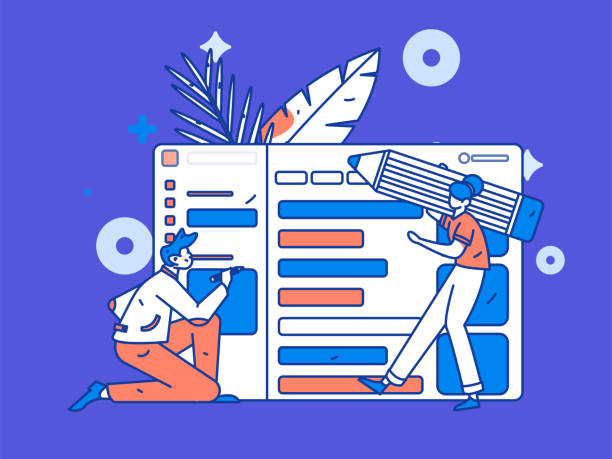
After keyword research, the technical aspects of SEO-optimized website design come into play.
The technical structure of a website is the backbone of its SEO and directly impacts how search engines crawl and index it.
A website that is not technically strong may not rank well, even with excellent content.
Key technical factors include crawlability, indexability, optimized URL structure, the presence of an XML sitemap (sitemap.xml), and a robots.txt file.
The sitemap helps search engines identify and index all important pages of your website, while robots.txt specifies which sections should not be crawled.
Site loading speed is one of the most critical technical factors affecting both user experience (UX) and SEO ranking.
Today’s users expect web pages to load in a fraction of a second, and search engines also prefer faster sites.
Image optimization (compression and use of modern formats), CSS and JavaScript file compression, leveraging caching, and choosing a reliable hosting provider are among the strategies to increase website speed.
This specialized and guidance section helps you implement the necessary infrastructure for strong SEO.
The table below lists some of the main factors affecting page loading speed:
| Factor | Description | Impact on Speed |
|---|---|---|
| Image Size | High-volume images cause slow loading. | Very High |
| CSS and JavaScript Files | Large and unoptimized files cause render-blocking. | High |
| Browser Cache | Temporary data storage for subsequent visits. | Medium |
| Hosting | Server quality and location directly impact response time. | Very High |
| Number of Redirects | Too many redirects increase loading time. | Medium |
Producing Quality and User-Friendly Content

After laying the technical foundation, content plays a primary role in the success of SEO-optimized website design.
“Content is king” is an old but always valid saying in the world of SEO.
High-quality, unique, and user-friendly content not only attracts users and increases their dwell time but also sends positive signals to search engines that your site is valuable and authoritative.
To create effective content, you must first know your target audience and understand their needs and questions.
Your content should address user needs and create real value.
This educational and guidance section emphasizes the importance of Google’s E-A-T (Expertise, Authoritativeness, Trustworthiness) principles; your content should be written by experts, be authoritative, and be trustworthy.
Diversity in content format is also very important; using text, images, videos, infographics, and podcasts can enrich the user experience.
Regular content updates also show search engines that your site is active and dynamic, constantly providing fresh information.
Use researched keywords naturally and without keyword stuffing in your content.
Engaging titles, appropriate headings, and the use of lists improve content readability.
Ultimately, your content should encourage the audience to take action (such as buying, signing up, or reading more) and align with your business goals.
Producing valuable content is the backbone of visibility and customer acquisition in the long run.
Are your e-commerce site visitors leaving before making a purchase? Don’t worry anymore! With Rasawb’s professional e-commerce website design services, solve the problem of converting visitors into customers forever!
✅ Significant increase in conversion rate and sales
✅ Unparalleled and engaging user experience
⚡ Contact us now for a free consultation!
The Role of User Experience (UX) in SEO

User Experience (UX) is no longer just a peripheral factor; it is an integral part of SEO-optimized website design and a significant ranking factor.
Search engines are increasingly focusing on user experience signals to determine web page rankings.
Sites with poor user experience typically have a high bounce rate, and users spend little time on them, which sends negative signals to search engines.
A website with strong UX leads users to spend more time on the site, view more pages, and interact more with the content.
These behaviors indicate to search engines that your content is valuable and relevant.
Key UX aspects that affect SEO include responsive design for proper display on all devices (mobile, tablet, desktop), intuitive and simple navigation, page loading speed (as previously mentioned), and logical content structure.
This is an analytical section that demonstrates how small improvements in UX can lead to significant increases in SEO rankings. User-centric design means placing user needs and expectations at the center of the design process.
Is your website easily navigable? Is the information users need quickly and clearly accessible? The answers to these questions are crucial for SEO success.
These factors not only help improve your ranking but also lead to increased conversion rates and customer loyalty.
Internal and External Link Building
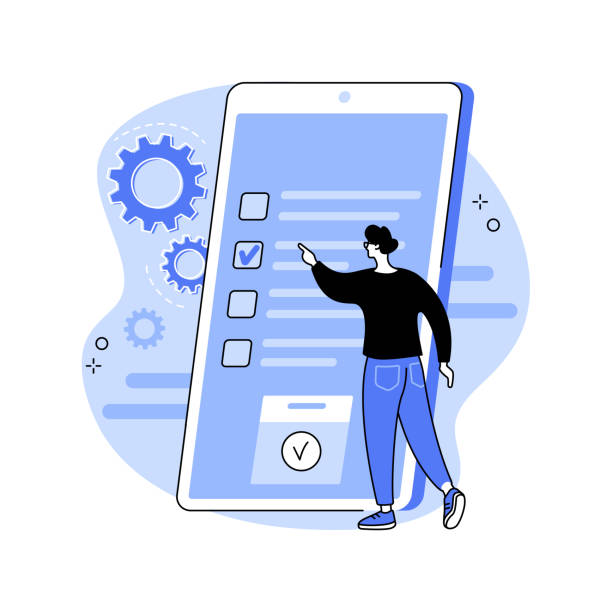
Link building, both internal and external, is another backbone of SEO-optimized website design strategy.
Links help search engines understand your site’s structure, identify relationships between different pages, and transfer authority between them.
Internal links are links that connect different pages within a single website.
A strong internal linking strategy not only helps search engines crawl and index all your pages but also improves user experience, as users can easily navigate from one page to another related page.
Using relevant and descriptive anchor text for internal links is very important.
This is a specialized guide: ensure that every internal link is logical and purposeful and contributes to increasing content value.
External links (backlinks) are links that point to your site from other websites.
High-quality backlinks from reputable and relevant sites are one of the strongest ranking signals for search engines.
These links are considered “votes of confidence” for your website.
Acquiring natural and relevant backlinks through producing excellent content that others want to link to is the most important approach.
Avoiding buying links or participating in illegal link-building networks is crucial, as it can lead to Google penalties.
Correct understanding and implementation of link-building strategies significantly increase your website’s SEO power and help it appear higher in search results.
Data Analysis and Continuous Improvement

A successful SEO-optimized website design never ends; it is a continuous process that requires data analysis and ongoing optimizations.
After implementing SEO strategies, the next step is to monitor website performance and identify strengths and weaknesses.
Tools like Google Analytics and Google Search Console are vital resources for collecting and analyzing SEO data.
Google Analytics provides detailed information about website traffic, user behavior, traffic sources, and conversion rates, while Search Console helps you see website performance in search results, identify technical issues, and view the keywords users used to find you.
This is an analytical and specialized section that enables you to make data-driven decisions. Monitoring key performance indicators (KPIs) such as keyword rankings, organic traffic, bounce rate, time on site, and conversion rate allows you to measure the effectiveness of your strategies.
Based on these analyses, you can identify areas of the website that need improvement and conduct A/B tests to optimize various elements (such as titles, meta descriptions, and calls to action).
This iterative and dynamic process ensures that your website is constantly improving and adapting to changes in search engine algorithms and user behavior. Without continuous analysis and improvement, even the best initial SEO design will lose its effectiveness over time.
The table below shows some key SEO metrics that should be regularly tracked.
| Metric | Description | Why is it important? |
|---|---|---|
| Organic Traffic | Number of visitors coming to the site through search. | Indicates overall SEO success. |
| Keyword Rankings | Site’s position for specific keywords in search results. | Indicates visibility for target phrases. |
| Bounce Rate | Percentage of users who view only one page and leave. | Indicates content quality and user experience. |
| Time on Site | Amount of time users spend on the site. | Indicates user engagement with content. |
| Conversion Rate | Percentage of users who complete a desired action (e.g., purchase). | Indicates SEO effectiveness on business goals. |
Local SEO and Responsive Website Design

Alongside general SEO, Local SEO and Responsive Design are two other vital aspects of SEO-optimized website design, especially important for businesses with physical customers or geographically targeted audiences.
Local SEO optimizes your website for visibility in search results related to a specific geographic location.
This is crucial for businesses such as restaurants, stores, salons, and other local services.
Registering and optimizing your business profile on Google My Business, collecting customer reviews, and ensuring the accuracy of NAP (Name, Address, Phone number) information across all online directories are key steps in local SEO.
This is an explanatory section that teaches how to attract local customers.
Responsive design means that your website automatically adjusts its layout and content to the screen size of the user’s device, whether it’s a mobile, tablet, or desktop.
Given that most searches today are conducted via mobile devices, Google has adopted a “mobile-first indexing” approach, meaning it considers the mobile version of your site as the primary version for indexing and ranking.
Therefore, ensuring that your website displays well on mobile and provides a seamless user experience is crucial for SEO.
This includes ensuring appropriate font size, clickable buttons, and easy navigation on smaller screens.
Ignoring local SEO or responsive design can mean losing a large portion of your audience and business opportunities, even if your site is strong in other SEO aspects.
Tired of losing business opportunities due to not having a professional corporate website? Don’t worry anymore! With Rasawb’s corporate website design services:
✅ Your brand’s credibility and professionalism will increase.
✅ You will attract more customers and sales leads.
⚡ Get a free consultation now to get started!
Updates and the Future of SEO Design

The world of SEO and SEO-optimized website design is constantly changing.
Search engines, especially Google, regularly update their algorithms to provide more accurate and relevant search results.
This is a news-oriented and analytical section that familiarizes you with current and future SEO developments.
Significant updates like Pandora (low-quality content), Penguin (spammy links), and Core Web Vitals (user experience and site speed) have had profound impacts on website rankings.
Therefore, an SEO specialist or web designer must always stay updated with the latest changes and best practices.
The future of SEO is moving towards a deeper understanding of user intent, Voice Search, and Artificial Intelligence in content.
With the expansion of smart devices and voice assistants, optimizing for voice search, which usually involves longer and more conversational phrases, is gaining increasing importance.
Furthermore, AI is changing how content is created, optimized, and even consumed.
AI-powered tools can help you with keyword research, content generation, and data analysis.
In the near future, we may see a greater focus on E.E.A.T (Experience, Expertise, Authoritativeness, Trustworthiness), which adds the factor of the author’s or content creator’s personal experience to the previous principles.
Successful sites will be those that not only adapt to algorithms but also continuously focus on providing the best experience and most valuable content for their users.
This is not entertaining content, but a serious warning for web professionals: staying stagnant in the world of SEO means falling behind.
Conclusion and Next Steps

At the end of this comprehensive educational and guidance, it is clear that SEO-optimized website design is a long-term and strategic investment that ensures the online success of any business.
This process is not merely limited to a set of technical techniques but requires a deep understanding of user behavior, quality content production, adherence to technical standards, and continuous monitoring and optimization.
From precise keyword research to site speed optimization, from producing valuable content to a strong link-building structure, and from attention to user experience to local SEO and mobile compatibility, each section plays a vital role in your website’s visibility in search results.
Your next steps for a successful SEO-optimized website design should include the following:
- Comprehensive SEO audit of the current website (if any) to identify strengths and weaknesses.
- Developing a comprehensive and precise keyword strategy based on your audience’s needs.
- Technical website optimization, including improving loading speed, URL structure, and crawlability.
- Creating a content calendar and regularly producing unique, engaging, and informative content.
- Focusing on user experience and ensuring the website is responsive across all devices.
- Planning for quality internal and external link building.
- Continuous monitoring of SEO performance using analytical tools and implementing necessary improvements.
Remember that SEO is a marathon, not a sprint.
With patience, expertise, and continuous effort, your website will not only achieve higher rankings in search engines but will also become a valuable resource for your audience and significantly contribute to your business’s sustainable growth.
Frequently Asked Questions
| Question | Answer |
|---|---|
| What does SEO-optimized website design mean? | It refers to designing a website that, in addition to an attractive appearance, is technically and content-wise optimized to achieve higher rankings in search engine results. |
| Why is SEO-optimized website design important? | It increases organic traffic from search engines, improves business visibility, attracts more customers, and ultimately boosts sales. |
| What are the key elements in SEO-optimized website design? | Mobile optimization, high loading speed, quality and relevant content, correct use of keywords, proper URL structure, and usage of title and meta tags. |
| What role does content play in website SEO? | Unique, valuable, informative content with target keywords plays a vital role in attracting users and achieving better rankings in search results. |
| What is Mobile-First Indexing? | A Google approach where the mobile version of the website is prioritized for indexing and ranking. Therefore, website responsiveness for mobile is essential. |
| How can website loading speed be improved? | Compressing images, using caching, optimizing CSS and JavaScript codes, using a powerful hosting, and enabling Gzip compression. |
| What is the importance of keywords in SEO? | Keywords help search engines understand the topic of your page and link it to relevant user searches. |
| What role do Title Tag and Meta Description play? | The Title Tag is the most important element in on-page SEO, and the Meta Description is a summary of the page’s content that encourages users to click. Both are displayed in search results. |
| How does Internal Linking help with SEO? | It helps search engines discover and index different pages of the site and distributes page value across various sections of the site. It also improves user experience. |
| What is the use of a Sitemap in SEO? | It is an XML file that provides a list of all important pages of the site to search engines to facilitate site crawling and indexing. |
And other advertising services from Rasawb Advertising Agency
Smart Link Building: Designed for businesses looking to increase sales through precise audience targeting.
Smart Direct Marketing: An innovative platform for improving digital branding by customizing user experience.
Smart SEO: A combination of creativity and technology for digital branding through user experience customization.
Smart Sales Automation: A novel service for increasing click-through rates through Google Ads management.
Smart Advertising Campaign: Professional optimization for customer acquisition using SEO-driven content strategy.
And over hundreds of other services in internet advertising, advertising consultation, and organizational solutions
Internet Advertising | Advertising Strategy | Sponsored Articles
Sources
Principles of SEO-Optimized Website DesignSuccessful SEO Strategies in Web DesignSEO Guide for Beginners in Website DesignHow to Design an SEO-Friendly Website?
? Rasawb Afarin Digital Marketing Agency is your trusted partner on the path to digital growth and achieving your business goals. From custom website design to SEO optimization and advertising campaign management, we are by your side to ensure a powerful online presence.
📍 Tehran, Mirdamad Street, next to Bank Markazi, Kazeroun Jonubi Alley, Ramin Alley, No. 6

